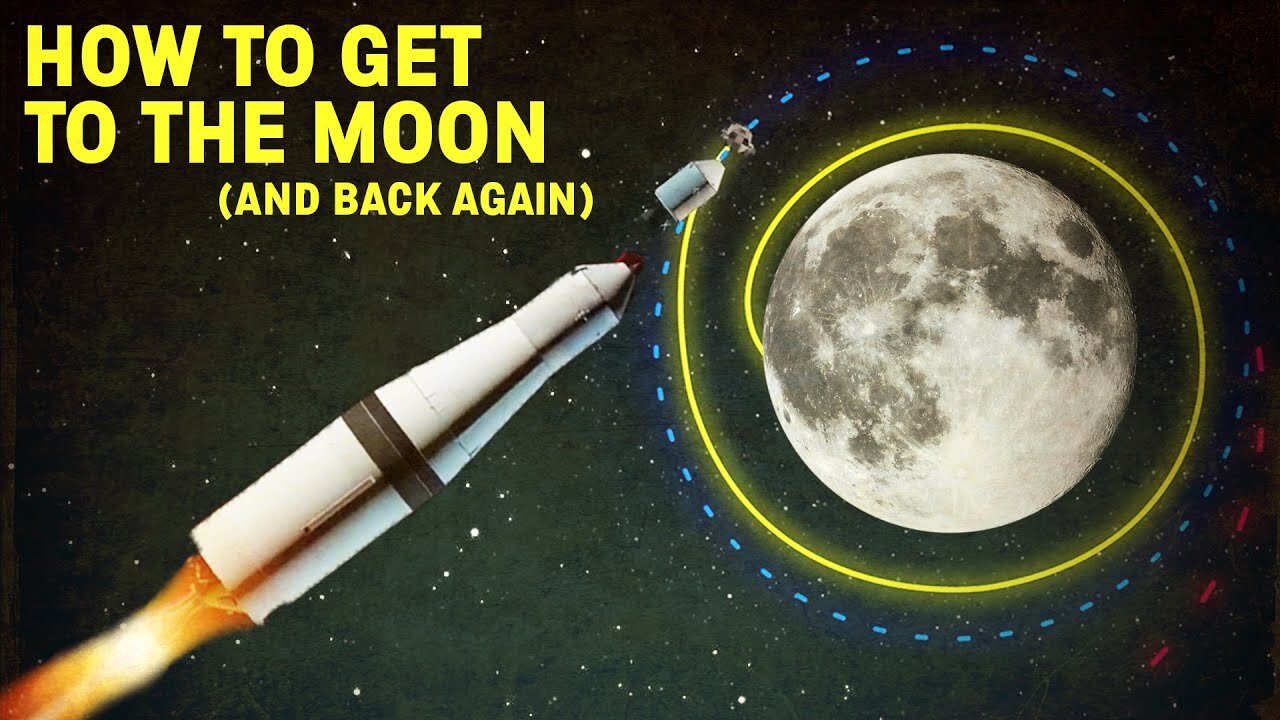Premium Only Content

HOW TO GET TO THE MOON
Getting to the Moon is a complex and technologically demanding process that involves several key steps. Here's a brief description of how a mission to the Moon might be conducted:
Planning and Design:
Before anything else, a team of scientists, engineers, and experts plan the mission. They decide on the objectives, the spacecraft design, launch vehicle, mission duration, and more.
Spacecraft and Equipment:
A specialized spacecraft, often called a lunar module or lander, is designed and built to transport astronauts and equipment to the Moon's surface. The spacecraft usually consists of multiple components, including the command module (which stays in lunar orbit) and the lunar module (which lands on the Moon).
Launch:
The spacecraft is launched from Earth using a powerful rocket, such as the Saturn V or the Space Launch System (SLS). The rocket provides the necessary thrust to escape Earth's gravity and enter a trajectory towards the Moon.
Trans-Lunar Injection (TLI):
Once in Earth's orbit, the spacecraft performs a maneuver called trans-lunar injection. This involves firing its engines to increase its speed and direct it toward the Moon.
Voyage to the Moon:
The spacecraft travels through space for several days, maintaining communication with mission control on Earth. Astronauts on board carry out various tasks, including system checks and course corrections.
Lunar Orbit Insertion:
As the spacecraft approaches the Moon, it performs a braking maneuver to slow down and enter lunar orbit. This allows the command module to stay in orbit while the lunar module prepares for descent.
Descent and Landing:
The lunar module separates from the command module and begins its descent to the Moon's surface. During this phase, precise navigation and communication are crucial. The module's engines are used to control the descent rate and landing site selection.
Surface Operations:
Once landed, astronauts conduct scientific experiments, gather samples, and perform various tasks on the lunar surface. They might use rovers, conduct spacewalks, and explore the Moon's terrain.
Ascent and Reunion:
After completing their surface activities, astronauts re-enter the lunar module, leaving behind any equipment not needed for the return journey. The lunar module's ascent stage takes off from the Moon's surface and docks with the command module in lunar orbit.
Return Journey:
The command module, now carrying the astronauts and lunar samples, begins its journey back to Earth. The return trajectory is carefully calculated to ensure a safe re-entry into Earth's atmosphere.
Re-Entry and Splashdown:
The command module re-enters Earth's atmosphere at high speeds. The heat shield protects it from the intense heat generated during re-entry. Parachutes are deployed to slow down the module's descent, and it lands in the ocean, where recovery teams retrieve the astronauts and the spacecraft.
The process involves an intricate interplay of advanced technology, careful planning, and coordination among numerous teams. As of my last update in September 2021, various space agencies and private companies continue to work on developing and improving the technologies needed for lunar missions
-
 28:59
28:59
Film Threat
9 hours agoTHUNDERBOLTS* EARLY REACTIONS | Film Threat After Dark
7.97K3 -
 8:02:12
8:02:12
Rebel News
4 days ago $208.12 earnedELECTION NIGHT LIVE: Rebel News Canada coverage with Ezra Levant, Sheila Gunn Reid & Special Guests
411K227 -
 1:24:54
1:24:54
Badlands Media
13 hours agoBaseless Conspiracies Ep. 130: Iberia Blackout, Green Energy Failures, and Grave-Robbing Government Experiments
74.7K28 -
 2:12:50
2:12:50
FreshandFit
6 hours agoModern Men VS Modern Women
42.6K32 -
 4:17:07
4:17:07
vivafrei
8 hours agoELECTIONS CANADA RESULTS LIVE STREAM WITH VIVA COMMENTARY!!!
125K139 -
 2:39:37
2:39:37
TimcastIRL
8 hours agoDemocrat LAUNCHES IMPEACHMENT Against Trump Citing Deportation, Abrego Garcia Case | Timcast IRL
159K140 -
 2:17:27
2:17:27
IcyFPS
6 hours agoA new legend rises.. Icy vs Teardrop | @playoffthegrid | Team MERC Grind |
26.9K2 -
 8:07:56
8:07:56
TwinGatz
8 hours ago🔴LIVE - Endless Jank | Oblivion Remastered
28K -
 1:33:55
1:33:55
Glenn Greenwald
13 hours agoGaza Starves, Pro-Israel Propagandists Escalate Extremist Rhetoric and Actions | System Update #444
150K303 -
 LIVE
LIVE
EnDuEnDo
8 hours ago🚨Variety Stream 🎮 Push to 500 Followers 🚀 Chill Vibes 😎
476 watching